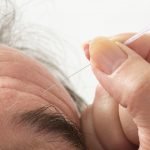Update on Trends, Safety, and Efficacy in Dermatology
Lisa Meserole, MS, ND
Antiaging treatments for skin and beauty are skyrocketing. The science and research of dermatology and the skin have advanced dramatically. Innovations in formulation through new technologies offer increased functional effects in hair and skin care. In 2011, the US cosmetic industry was valued at $58 billion.1 Sales are booming for popular home devices, including iontophoresis systems that enhance beauty serum penetration, anticellulite massagers, acne lights, LED collagen stimulators, intense pulsed light devices, a comeback of the sonic exfoliation brush, and others.2 Beauty product categories are diverse and growing (eg, reflective makeup, eyelash growth serums, and skin protectors, hydrators, plumpers, brighteners, cleansers, tone correctors, and antiwrinkle systems). In addition, aestheticians, dermatologists, and cosmetic surgeons are busier than ever, delivering to increasing numbers of patients dozens of diverse treatments such as facials, botulinum toxin, laser, radiofrequency, microcurrent, and elective cosmetic surgical procedures (eg, brow-lifts and full face-lifts). Some of these products and treatments are safe and effective. Others are sometimes found to be damaging or ineffective.
For clinicians, helping their patients through the dizzying and sometimes deceitful maze of skin care and beauty treatments can be a challenge. Some Internet and book resources on cosmetic safety targeted at consumers may contain inaccurate information because of an incomplete understanding of cosmetic science. Relatively safe active agents may be demonized, and novel potentially dangerous advances may be ignored.
The incidence of skin cancer is galloping. The public is told to wear sunscreens year-round, even indoors behind windows or in cars, to reduce skin cancers and to prolong youthful skin. Sunscreens are assumed to offer safe and sure protection. But do they? Sunscreen protection is still an emerging science. For the very fair or at-risk skin, the best advice is to cover up using clothing, brimmed hats, and cotton gloves.
UV Radiation Coverage, Regulation, and Standards
Sunscreens help protect against UV damage if they are carefully chosen and applied as directed. Early “barrier” sunscreens helped block UV radiation. These included the white zinc oxide cream that beach lifeguards used on their noses. Around 2000, UV-absorbent active agents (which work by absorbing the irradiation that hits the skin rather than by shielding the skin with a barrier film) were developed and now dominate the market. Different active agents in sunscreens offer different UV protection. The 2 sources of irradiation damage for which the Food and Drug Administration defined standards of safety and efficacy in June 2011 are UV-A and UV-B. Coverage against UV-C radiation is not regulated. To achieve both UV-A and UV-B protection, a sunscreen must be labeled at a high SPF and as a broad-spectrum agent.3 It must also be applied at the concentration and frequency listed on the label.
Stabilizing Active Ingredients
Improved technology has permitted stabilization of the active agents that absorb UV-A and UV-B. However, during the early years of development, some ingredients almost immediately became unstable (inactive) once applied to the skin, which was eventually discovered and corrected.
Nanoparticles and the Nanotechnology Boom
Around 2000, nanotechnology represented a breakthrough in sunscreen manufacturing: nanoparticles of titanium dioxide in sunscreens produced a transparent lotion instead of an opaque one. Nanotechnology in cosmetics is unregulated and is presumed to be safe; it requires no labeling. The science is new, and long-term exposures in humans have yet to be observed. Nanotechnology is widely used in everyday products such as sunscreens, cosmetics, antimicrobial clothes and socks, and so forth. It is commonly known that nano-sized particles can penetrate the dermis and enter organ systems. It is also known that the nano-sized version of an active agent may have biological or chemical activity that differs from the non–nano-sized version. At low exposures, this may be inconsequential. However, some question whether exposure of small amounts from diverse sources may influence humans over a lifetime.
Patient Tolerance
Many consumers react to modern sunscreens, with their cheeks and skin becoming red or irritated. They may better tolerate some of the sunscreens marketed for use in infants. Some natural products and medicinal plants confer sun protection but have been incompletely studied or standardized.
Clinicians who see sun damage in their patients may use a dermatoscope to aid in the diagnosis of or referral for suspicious lesions. Although not diagnostic, the dermatoscope is a useful aid. Two pharmaceutical prescriptions can be considered for certain types of skin damage or goals. Tretinoin and retinol creams at prescription strength can reduce skin cancer risk and are proven to help reduce fine wrinkles and to increase collagen. These are applied a few times per week over time. They increase photosensitivity and burn potential and can cause erythema, peeling, and irritation. These agents act as exfoliants and as gene regulators. Different active ingredients and different bases (gel, lotion, or ointment) influence irritation; gels are the most irritating and drying but are the most penetrating. They not only reduce actinic keratosis but also significantly improve the appearance of the skin. 5-Fluorouracil can be prescribed for patients with actinic keratosis, superficial basal cell carcinoma, or some superficial squamous cell cancers. This agent is used over several weeks, causing severe erythema and sloughing of diseased skin. It is a severe treatment, and the patient avoids all sun and endures a burnt face for many weeks as healing occurs and the DNA-damaged skin is replaced. The cure rate for superficial basal cell carcinoma exceeds 80%.4,5 Natural vitamin A has not been similarly studied. Outcomes may be enhanced with oral supplementation of zinc, essential fatty acids, green tea, lipoic acid, and vitamins A, C, D, E, and B complex, along with a good diet during healing.
Cosmetics
The safety question of a lifetime exposure to nanoparticles applies to patients using beauty creams, serums, makeup, and other cosmetics. Nanoparticles are generally unlabeled.
Phthalates are present in many products, including small amounts as fixatives in perfumes, detergents, and cleaners (as a fragrance component), as well as in intravenous tubing, food packaging, medical devices, and shower curtains. As a component of fragrance, phthalates are not required to be labeled because the Food and Drug Administration found them to “pose no health risks.” Animal investigations have shown that phthalates can act as hormone disruptors. The debate continues about what amount of exposure is safe. A September 2011 study associated high blood phthalate levels in mothers with delayed motor development in toddlers. A Centers for Disease Control and Prevention study6 found that 100% of those sampled had 7 phthalates in their blood specimens, with women of childbearing age having the highest levels.
Evidence-Based Beauty Interventions
A myriad of beauty treatments exist. Five evidence-based interventions are highlighted herein.
Food as Beauty Treatment
Dr Nicholas Perricone was among the first dermatologists to repopularize the importance of nutrition in skin care. His 3-day antiwrinkle diet consists of salad, salmon, blueberries, and water (see the sample diet at www.perriconemd.com) and is fundamentally an anti-inflammatory, hydrating, low-carbohydrate, high-oil, and high-flavonoid regimen.
Petroleum Jelly
Even today, some Hollywood, California, dermatologists tell clients there is no substitute for a periodic petroleum jelly treatment, lightly applied to the neck, nonoily parts of the face, forearms, hands, and feet a few times per week at night, which can be deeply moisturizing. Some skin types do not tolerate it. A sustainable and more healthful alternative may be castor oil; however, it can stain clothes and is more oily. Some castor oil is now synthesized. It can also be applied to dry hair overnight and then shampooed out.
Follicle Nutrient Serum
Follicle nutrient serum is an effective nonhormonal hair growth promoter. A researcher of wound healing remedies had noticed that denuded skin grew hair, which led to a formula based on vitamins, minerals, and amino acids that was later developed into a nightly scalp treatment for thinning hair. I have seen this treatment arrest hair loss and enhance hair growth in patients. Four or more weeks are needed for an effect. If no change occurs by 4 weeks, the serum may be ineffective for a patient.
Tea Tree Essential Oil for Chronic Gum Disease or Fungus
A 68-year-old patient whose dermatologist had diagnosed her red nose of 5 years as dermatitis was seen because the prescribed topical agents were not improving or curing the problem. I suspected mild chronic fungal infection based on the history and appearance. After a 10-day therapeutic trial of topical essential oil (EO) of Melaleuca alternifolia in a lotion base, the symptom improved by 50% for the first time since onset. Twice daily, the patient applied 1 drop of pure EO of Melaleuca for a month, and the condition fully resolved. Pure EO may be too strong for some patients and should be diluted in skin lotion at first. A few drops of tea tree EO on a cotton swab to treat gum disease or oral hypersensitivity also may benefit patients. Patients need to be reminded to avoid excessive use of EOs.
Mineral Water
A final evidence-based beauty intervention is mineral water. Washing the face with it instead of tap water seems to enhance moisture absorption and can calm irritated skin.
In Closing
Other effective topical beauty agents include the following: vitamin C (resists photoaging), vitamin E (helps in photoprotection), hyaluronic acid (hydrates and links skin cells), alpha lipoic acid (protects skin proteins from free radical damage and penetrates oil and water membranes), copper (enhances elastin, as do vitamin C and zinc when applied topically), and peptides (enhance collagen and potentiate the actions of copper).
I observed an 83-year-old man firm and hydrate his dry, wrinkled, loose skin on the face, arms, and legs after following the 3-day antiwrinkle diet by Perricone. His energy also improved. This diet is unhealthy long term because it is ketogenic and too restricted nutritionally. The diet is also contraindicated in patients with diabetes mellitus, serious heart or kidney disease, cachexia, and some other conditions.
A complete and balanced diet that improves the health of the skin is built around the following: 3 to 4 oz of oily fish (wild salmon, halibut, sea bass, trout, sardines, and albacore tuna) 3 times per week and daily intake of berries, melons, salads, fresh nuts and seeds, and virgin olive, walnut, or coconut oil. Individual allergens must be avoided. For sustainable and safe mercury-free seafood, see the Monterey Bay Aquarium (Monterey, California) super green list (http://www.montereybayaquarium.org/cr/cr_seafoodwatch/sfw_health.aspx).
Diet pattern can nourish skin and beauty, as well as reduce skin cancer risk and sun damage. Carotenoid foods (carrots, cantaloupes, tomatoes, yellow vegetables, and fruits) in the diet are among the photoprotective group shown to reduce the incidence of melanoma.
Thousands of products and treatments exist to protect and enhance young-looking skin. Some innovations pose possible health or environmental risks, while others offer breakthrough and effective cures or effects. If clinicians assist patients in sorting through some of the issues and hype to make wise and personalized decisions, a true service has been rendered and the opportunity of our time seized.
 Lisa Meserole, MS, ND is a naturopathic physician and past dietitian. She has worked as a clinician for more than 25 years. She was professor of botanical medicine at Bastyr University (Kenmore, Washington) from 1993 to 1996 and served as chair of its nutrition program from 1986 to 1989. She studied botanical medicine, Traditional Chinese Medicine, and Tibetan herbal medicine and is interested in cross-cultural health paradigms and traditional knowledge of food and healing. She was on the founding board of the international Bioresources Development and Conservation Programme and helped edit the American Herbal Pharmacopeia (http://www.herbal-ahp.org). She writes, teaches, and consults; her current focus is antiaging health, senior health, and skin care using diet, nutrition, and medicinal plants. She is a member of the Society of Cosmetic Chemists. She has consulted in the Andes, West Africa, and Bhutan on biodiversity and traditional medicine projects for indigenous villages.
Lisa Meserole, MS, ND is a naturopathic physician and past dietitian. She has worked as a clinician for more than 25 years. She was professor of botanical medicine at Bastyr University (Kenmore, Washington) from 1993 to 1996 and served as chair of its nutrition program from 1986 to 1989. She studied botanical medicine, Traditional Chinese Medicine, and Tibetan herbal medicine and is interested in cross-cultural health paradigms and traditional knowledge of food and healing. She was on the founding board of the international Bioresources Development and Conservation Programme and helped edit the American Herbal Pharmacopeia (http://www.herbal-ahp.org). She writes, teaches, and consults; her current focus is antiaging health, senior health, and skin care using diet, nutrition, and medicinal plants. She is a member of the Society of Cosmetic Chemists. She has consulted in the Andes, West Africa, and Bhutan on biodiversity and traditional medicine projects for indigenous villages.
- Pitman S. Contraction of US cosmetics industry set to rebound by 2014. January 13, 2011. http://www.cosmeticsdesign.com/Business-Financial/Contraction-of-US-cosmetics-industry-set-to-rebound-by-2014. Accessed March 10, 2012.
- Travis W. Top 10 home beauty devices for 2011. http://www.healthyskinportal.com/articles/top-ten-home-beauty-devices/257/. Accessed February 24, 2012.
- U.S. Department of Health and Human Services. Questions and answers: FDA announces new requirements for over-the-counter (OTC) sunscreen products marketed in the U.S. Accessed March 1, 2012.
- Kafi R, Kwak HS, Schumaker WE, et al. Improvement of naturally aged skin with vitamin A (retinol). Arch Dermatol. 2007;143(5):606-612.
- King IA, Tabiowo A. The effect of all-trans-retinoic acid on the synthesis of epidermal cell-surface–associated carbohydrates. Biochem J. 1981;194(1):341-350.
- Centers for Disease Control and Prevention. Third National Report on Human Exposure to Environmental Chemicals. July 2005. http://www.jhsph.edu/ephtcenter/Third_Report.pdf. Accessed March 14, 2012.










